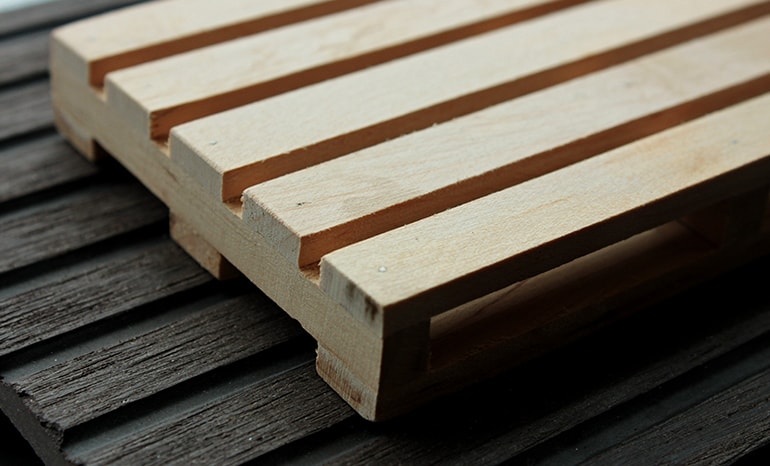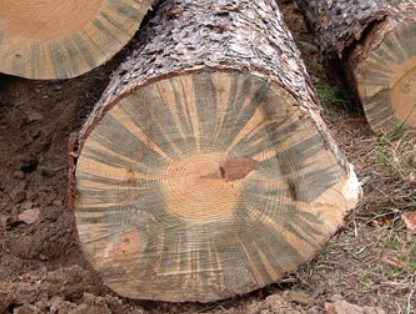Stumped About Wooden Pallet Stains and Discoloration?
Spring is a colorful season, but when it comes to your pallets, seeing any variation in color can be cause...
Spring is a colorful season, but when it comes to your pallets, seeing any variation in color can be cause...

Spring is a colorful season, but when it comes to your pallets, seeing any variation in color can be cause for alarm. Is it mold? Does this mean you have to replace your entire pallet supply? Don’t feel blue; instead, take a closer look at your pallets. Discoloration doesn’t necessarily mean a mold infestation. Rather, it could result from naturally occurring, non-biological defects that are harmless.
Black – When steel wires, staples, nails, saw blades, or other iron or steel comes in contact with wet wood, it can produce a dark stain on the wood. This is known as iron stain and it is the most common discoloration found on wood, including pallets. While unsightly, it is not dangerous to human health.
Brown – Kiln drying certain wood species—western hemlock in particular—can cause variations in surface color; affected areas turn dark brown.
Tan – You and I may look healthy with a tan, but when your wood pallets turn bronze, they are referred to as “weathered.” A chemical change occurs in wood tannins when exposed at length to sun exposure. You can help minimize this by storing pallets inside or, if they must be stored outside, keep them covered and well ventilated.
Blue – Rather than mold, this color could be a result of bluestain, a type of fungi found in wood products that does not cause decay. Unlike mold, it is not airborne and it does not digest the wood cell wall, which means it has minimal impact on structural integrity.
Gray – Hardwood species such as oak, beech, and maple can be affected by enzymatic discoloration (or a reaction of naturally occurring enzymes in living cells). The result of which is a grayish tone in sapwood.

Green/Purple – Lines or streaks of green or purple are naturally occurring mineral discolorations. This condition develops in wood sourced from trees rooted in mineral rich soil. Green is commonly seen in sugar maple wood species and purple may be noticed in yellow poplar.
If you need help identifying the source of discoloration on your wooden pallets, please give us a call. Knowing the difference between mold and naturally occurring color defects can help you save time, money, and unnecessary worry.
 Oct 12, 2022
Oct 12, 2022
It’s back! The annual race to raise funds for The Pallet Foundation begins in three days. Gather your co-workers, neighbors, and friends to participate in this virtual race for a great cause. All our collective efforts will go toward improving the safety of our industry and our environment.
continue reading double_arrow Dec 02, 2020
Dec 02, 2020
This year we had to learn how to cope with many challenges due to the virus. And in the process, we developed new phrases and slang that are now commonplace including ‘quaranteam,’ ‘virtual happy hour,’ and the ubiquitous ‘in this together.’ While that last phrase is often used to signify unity, at Rose Pallet it has greater meaning. Being ‘in this together’ is more than something we say, it describes something that we do.
continue reading double_arrow






